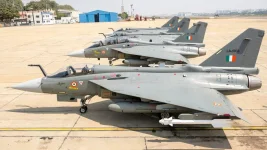- Views: 2K
- Replies: 12

NEW DELHI – In a major boost to its defence capabilities, India is set to acquire 31 MQ-9B Predator drones from U.S.-based General Atomics, following approval from the Cabinet Committee on Security (CCS).
The deal, expected to be finalized by the end of 2024, will see the Indian Navy, Army, and Air Force receive these advanced unmanned aerial vehicles (UAVs) between 2027 and 2030.
The MQ-9B platform is renowned for its intelligence, surveillance, and reconnaissance (ISR) capabilities, along with its strike potential. This acquisition marks a significant step in India's efforts to modernize its armed forces with cutting-edge technology.
Initial deliveries are expected to commence in late 2027 or early 2028, with the Navy and Army each receiving one MQ-9B in the first phase. The complete fleet is anticipated to be in India's possession by the end of the 2030s.
The Indian Navy will be the largest beneficiary, receiving 15 MQ-9B Sea Guardian variants specifically designed for maritime operations. These UAVs will significantly enhance the Navy's ability to conduct long-range patrols, track vessels, and monitor India's extensive coastline and exclusive economic zones (EEZ).
The Army and Air Force will each receive eight MQ-9B Sky Guardian variants. These will bolster the Army's ground-based intelligence and reconnaissance operations, while the Air Force will utilize them for wide-area surveillance, airspace monitoring, and potential combat support through precision strikes.
The MQ-9B boasts an endurance of over 40 hours and can operate at altitudes of up to 40,000 feet, providing India with enhanced surveillance capabilities across both land and sea. The drones can carry various payloads, including radar, sensors, and precision-guided munitions, making them suitable for both ISR and combat missions.
This acquisition aligns with India's broader strategy of strengthening its military with unmanned systems. The MQ-9B's versatility and capabilities make it a valuable asset in addressing the region's strategic challenges.
While the financial details and other specifics of the deal remain undisclosed, it is likely to include provisions for technology transfer and potentially local assembly or maintenance in India. This aligns with India's 'Atmanirbhar Bharat' (self-reliant India) initiative, which emphasizes domestic defence production.




